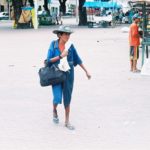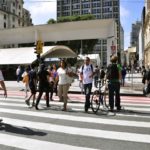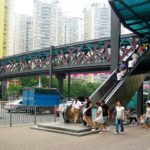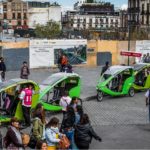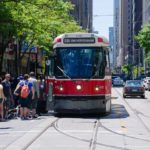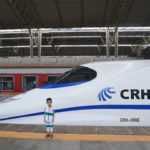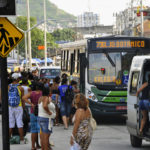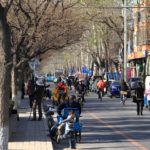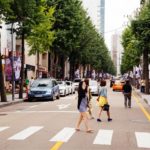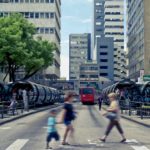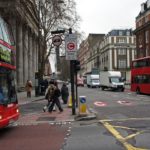Posts in the 'Integrated Transport' category
Today is our annual Bike to Work Day here in Washington, D.C. For many city residents, commuting is ingrained in their daily routine. By targeting how people regularly travel to and from work, there’s a lot of potential to transform ...

Deep in northeastern Brazil, far from Rio’s famous beaches and São Paulo’s bustling business district, a battle is underway to protect one of the country’s most unique urban habitats. The Cocó Ecological Park occupies nearly 3,000 acres of land in ...

Nossa Cidade (“Our City”), from TheCityFix Brasil, explores critical questions for building more sustainable cities. Every month features a new theme. Leaning on the expertise of researchers and specialists in WRI’s sustainable urban mobility team in Brazil, the series will feature in ...

Growing physical inactivity at a global scale is causing more people to suffer from chronic diseases every day. According to the World Health Organization (WHO), 31 percent of adults 15 years old and older were insufficiently active in 2008, leading ...

China’s rapid urbanization has dramatically increased the need for public transit infrastructure. To accommodate these changes, it’s estimated that China needs to expand urban rail by at least 3,000 kilometers by 2020—approximately a $4 trillion investment. In Chinese cities, funding ...

From April 15 – 16, 2015 over 300 experts—including government officials, policy makers, urban planners, and transport practitioners—participated in a global conversation about Smart Cities at CONNECTKaro 2015. The conference was hosted by EMBARQ India in New Delhi, and key ...

A century of car-centric urban development has left our cities polluted, congested, and searching for sustainable solutions. Transport Demand Management (TDM) strategies can provide these solutions by combining public policy and private sector innovation to reverse over-reliance on private cars. ...

While there are many inspiring examples of walkable, transit-oriented cities in Europe, there’s also plenty to learn from Canada. For example, with the extraordinary help of Jane Jacobs and other leaders, Toronto has been able to successfully keep expressways out ...

Many large Chinese cities have developed around transport corridors. Hangzhou and Suzhou, for example, grew wealthy from their position on the Grand Canal, which connected northern and southern China. Today, the country’s high-speed rail (HSR) system is proving to be ...

From April 15 to 16, 2015 in New Delhi, city and transport leaders from around the world came together for the third annual edition of WRI India’s CONNECTKaro conference. This year’s theme of Smart Cities for Sustainable Development and focused on ...

In 2012 alone, Latin America saw 131,000 preventable air pollution-related deaths. To reduce emissions and improve air quality, it’s essential that public transit fleets—like buses—become more fuel-efficient. Adopting cleaner fuels—like natural gas or low-sulfur diesel—and upgrading to technologies that produce ...

A century of car-centric urban development has left our cities polluted, congested and searching for sustainable solutions. Transport Demand Management (TDM) strategies can provide these solutions by combining public policy and private sector innovation to reverse over-reliance on private cars. ...

Editor’s note April 14, 2015: This article was updated to include a reference to the Bus Rapid Transit Centre of Excellence. The world has never been more urban than it is now, and this trend isn’t expected to slow down ...

What are smart cities? While there isn’t a standard definition, consensus is growing around the idea that smart cities utilize technology to foster green development, innovation, and new forms of citizen participation. Smart cities currently enjoy a strong positive image, ...

In 2003, London adopted a program of congestion pricing that now places a roughly $17 (£11.50) daily fee on motor vehicles entering central London. The effort was expected to reduce car traffic, air pollution, and emissions in the area, and ...

Page 20 of 135« First...10...192021...3040...Last »









